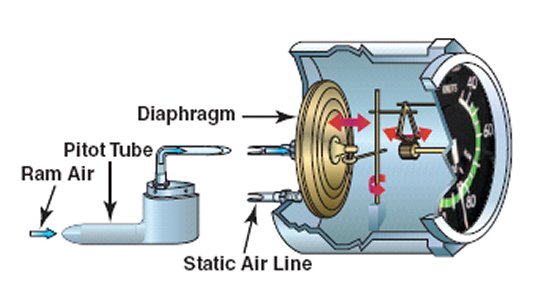thezoolityre
Pre-takeoff checklist
- Joined
- Apr 25, 2012
- Messages
- 106
- Display Name
Display name:
thezoolityre
Hey Folks, I am getting ready for my CFI, so I am second guessing EVERYTHING  . And in this case it has to do with the Pitot Tube.
. And in this case it has to do with the Pitot Tube.
Now, I have been studying up on all the instruments as a double checker to make sure I know in case he asks me to teach it, and I was running through a mock instruction of the pitot tube assembly with my CFI who is signing me off for my exam and when I was running through it saying it measures dynamic pressure he stopped me and asked if I could just blow into the pitot tube assembly on the ground and be okay. I responded with a faint memory of the fact that you can't or something would break.
Now he said the pitot tube would break, but two questions:
1) If the pitot tube would break just by blowing into it, then how come we can fly through air at a (hypothetically speaking) 120 knts TAS, and be fine?
2) Is it the pitot tube that really breaks, or is the diaphragm in the airspeed indicator that you mess up?
I know I should be more sure of this especially coming up as a CFI but it is one thing that seriously slipped my mind and now I am curious and second guessing on how the damn thing REALLY works!! (not the 10 lines the PHAK says either) and what would really break if you blew into it and why...
Thanks for the help, all!
Now, I have been studying up on all the instruments as a double checker to make sure I know in case he asks me to teach it, and I was running through a mock instruction of the pitot tube assembly with my CFI who is signing me off for my exam and when I was running through it saying it measures dynamic pressure he stopped me and asked if I could just blow into the pitot tube assembly on the ground and be okay. I responded with a faint memory of the fact that you can't or something would break.
Now he said the pitot tube would break, but two questions:
1) If the pitot tube would break just by blowing into it, then how come we can fly through air at a (hypothetically speaking) 120 knts TAS, and be fine?
2) Is it the pitot tube that really breaks, or is the diaphragm in the airspeed indicator that you mess up?
I know I should be more sure of this especially coming up as a CFI but it is one thing that seriously slipped my mind and now I am curious and second guessing on how the damn thing REALLY works!! (not the 10 lines the PHAK says either) and what would really break if you blew into it and why...
Thanks for the help, all!





